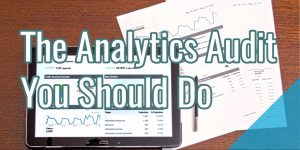This is the first in a series of posts on transparency. In today’s post, we lay out the many ways transparency is elusive in digital marketing today. We also include some best practices for stamping out the fuzziness prevalent in the programmatic landscape.
Most marketers will admit transparency in media buys sounds like a good idea. So why don’t we have it all the time? Inertia, circumstances, or legacy business practices are the usual culprits. Knowing about the types of programmatic transparency is a good place to start.
The Problem with Buyer/Seller Blindness
You may have read about the recent survey on programmatic buying by Forrester and the ANA. Although we know intermediaries carve up a media dollar along the ad delivery path, a surprising 33 percent of survey respondents in this study have turned a blind eye while knowingly opting into an undisclosed programmatic model.
Not knowing the true value of your media obscures your true ROI. This buyer/seller blindness stands in the way of programmatic growth and success.
Let’s dive in and take a look at the three types of transparency: intermediaries, environmental, and data.
1. Intermediaries: What is the True Cost of the Programmatic Supply Chain?
According to the ANA/Forrester study, 55 percent of marketers are concerned with the opaqueness of the intermediaries along the supply chain, up from 21 percent two years ago. No advertiser is immune to the supply chain realities, but seeing how the budget is allocated should be as natural as homebuyers scrutinizing loan origination fees from their mortgage broker.
There is a host of intermediaries in today’s programmatic supply chain including:
- Data / Targeting
- DMP technology
- DSP technology
- Ad serving (advertiser side, publisher side)
- Exchanges
- Publisher
- Verification
- Ad blocking
- Managed services fees through an agency or media buying partner
Not surprisingly, there are also several cost models:
- CPM-based fees
- Percent of media fees
- Flat fees
- Arbitrage
The advertiser pays most of the fees, while in some cases the publisher, or both the advertiser and publisher, pay them.
It’s common to have an agent buy media on the advertiser’s behalf, only revealing the final price of a campaign, total margin, and fees. Just as common is the masking of the closing or winning bid prices.
This lack of bidding transparency is precisely what’s needed for optimization. This practice is especially prevalent among black box vendors, as is straight-ahead arbitrage. Without transparent insights into what improves targeting and conversion, marketers are flying blind.
So, what’s the average take rate of each partner? It varies, of course, depending mostly on targeting strategies and pricing/profit models. But asking your supply chain partners exactly what they’re charging you is the first step in achieving total transparency.
2. Environmental: Ad Viewability to Detect Fraudulent or Unviewable Inventory
Certainly one of the hottest issues in ad tech today, environmental transparency of an ad is as important as the campaign’s message or who’s being targeted. There are more mysteries than answers focused on who sees your ad, how much was seen, how long they see it, and where the ad showed up, but help is on the way.
In the early days of RTB, fraudulent or unviewable inventory was a common problem. Although challenges remain, there is an increasing number of new tools available for advertisers, publishers, and ad servers to detect bot fraud, fraudulent inventory, or unviewable ads.
Still, there’s no consensus on how viewability is defined. Standard bodies like the IAB and MRC are driving clarity on this issue. Many new vendors are trying to monetize viewability. Large holding companies have their own standards as well.
Advertisers are increasingly demanding that publishers bear the burden of proof by complying with imposed measurement of viewability-centric campaigns. Viewability-tracking fees, brand safety-tracking fees, and brand lift study fees are paid by either side in an effort to run cleaner campaigns. Although far from being solved, the use of ad verification and brand safety tools goes a long way in solving environmental transparency.
3. Data: Data Transparency = True ROI
It seems logical that any data used in an ad campaign that you paid for would be accessible to you. But that isn’t always the case. Publishers could block the intent data or other data sets you would normally have access to with more transparent partners.
You may prefer to pay a black box provider because your only KPI is sales – this can work for some who don’t insist on understanding their true ROI. However, for data-driven marketing to work, seeing all your data for future learnings or to calculate your true ROI is essential.
Irresistible pricing models are as tempting as a timeshare in Tahiti. We get that. But regardless of whether you use a DSP or publisher tools for your programmatic buys, the more you know, the more you can improve outcomes – that is, if you want to know exactly how to improve outcomes rather than relying on your black box vendor to give you numbers devoid of margins or analysis.
Data are collected at every turn, every segment of the customer journey. CPC, CTR, and impressions are table stakes. For more intelligence, you need the eCPM and in-view impressions. Getting site-level reporting helps you blacklist/whitelist and improve targeting.
If you’re striving to get to your true ROI, knowing how the data points were calculated is certainly also part of the equation. Since we’re talking numbers, understanding the logic, math, and algorithms behind a bidding process is another must-have.
Guidelines for Getting Clarity on Transparency
You should be able to decide exactly what success looks like for your brand. This means choosing your own KPIs, publishers, and the data you want to bring, buy, optimize, or analyze. Here are some best practices for how to bring more transparency to your programmatic initiatives.
- Insist on seeing the media cost on an impression-by-impression basis, as well as breakouts of all other costs contributing to the total price.
- Pick the exact sites, formats, devices, and audiences you want.
- Utilize business rules within your RTB programmatic buys and with your brand safety to ensure a URL is present or that it matches where your ad eventually runs – if you can’t prove your URL, your programmatic partner shouldn’t bid on the impression.
- Request detailed campaign guidelines from your agency or DSP.
- Use third-party verification tools to detect bot traffic and sourced traffic, as both of these contribute to fraud.
- Evaluate and utilize tools from new fraud and viewability measurement partners.
- Assign in-house team members to focus on media by having them dig into agency and tech partner contracts to determine fraud and viewability practices.
- To make adding it all up easier, use IAB’s recently released Programmatic Fee Transparency Calculator.
Next time, we’ll dive deeper into the programmatic supply chain and how it affects cost.
Business & Finance Articles on Business 2 Community(100)
Report Post



